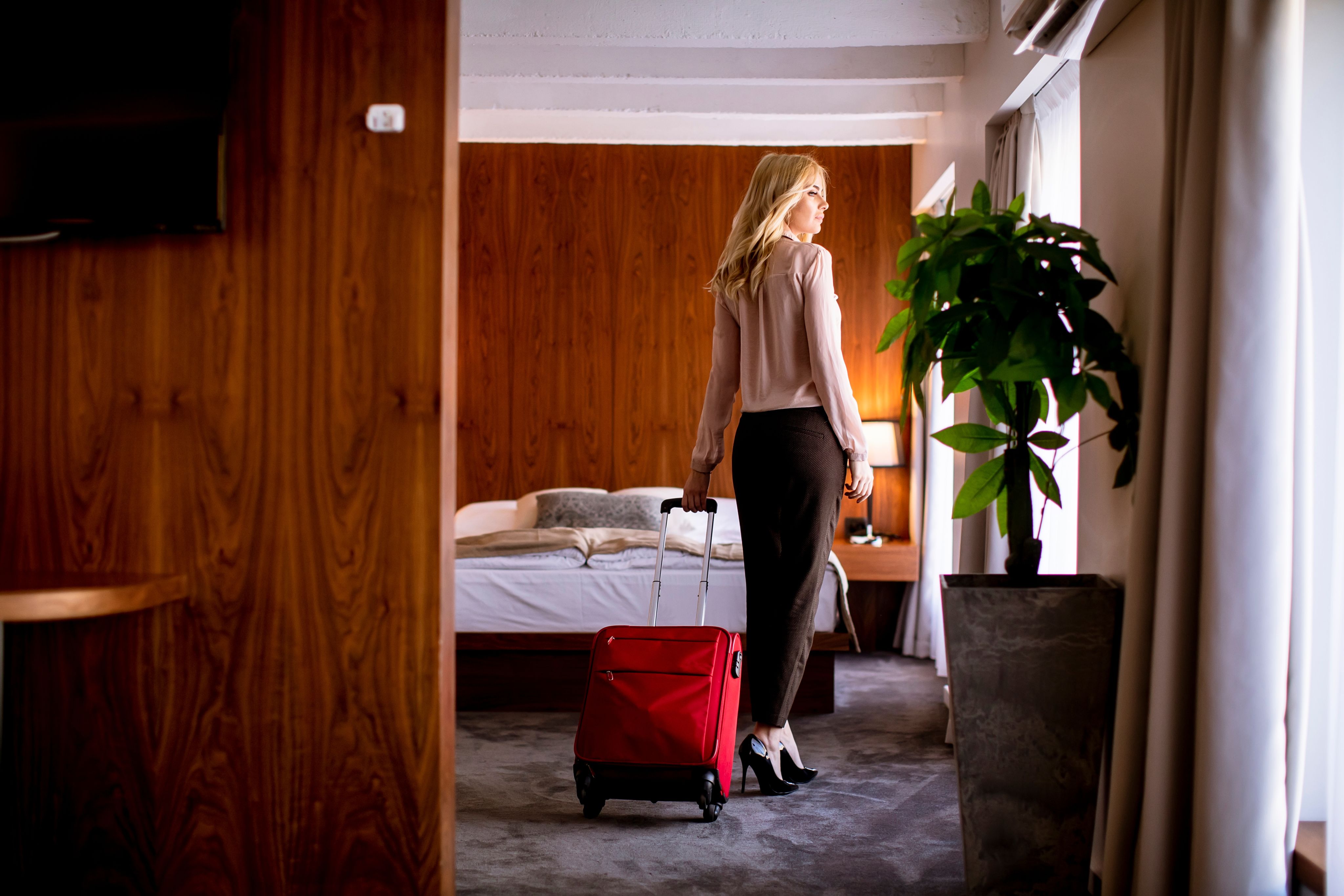STILL GOING STRONG
Buyers and suppliers alike bemoan the hotel RFP process, yet it remains central to many travel programmes. These are the seven key trends to watch out for this time round


A lot can change in a year; not least with Donald Trump¡¯s second presidency leading to an even tenser global business landscape. The world¡¯s a different place, and accommodation suppliers and corporates continue to adjust to new realities. Here are some of the key topics on the minds of industry experts when it comes to developing corporate hotel programmes.
1. BREAK FREE FROM THE NORM
Most travel departments are under pressure to lower costs, so be bold with your negotiations, advises Lucie Turpault, senior consultant at Areka Consulting. As an independent consultancy, she says Areka aims to freeze rates for future hotel contracts, or lower them if the corporate client has significantly higher volumes.
Part of the process involves opting for one-year contracts and being open to onboarding new properties. ¡°Our strategy is rather to start with one year, and try to get the maximum reduction, so the most competitive possible. We always solicit challengers during calls for tenders to ensure we can challenge those (hotels) already in the programme, especially in cities where there is competition, particularly Paris and London.¡±
HRS, meanwhile, believes there¡¯s always a case to be made to shift volume to a smaller number of suppliers to secure better rates. ¡°Because you're giving them more volume, they would be a little bit more flexible on price,¡± says Tim Wagner, HRS¡¯ SVP for procurement consulting and supplier relations.
As well as challenging the norm, thinking creatively is a key message when designing a corporate hotel programme. For example, skipping the expensive hotel breakfast is another means to bring down costs, according to Wagner.
¡°Breakfast, for many regions, just gets included. Now, more corporates are studying how many of their people actually use that,¡± he says. ¡°How many people just need a cup of coffee and a muffin, and they're fine? They don't need to be adding another $20 for each room night because they're just not using it.¡±

2. HOLD ON TO YOUR LOVED ONES
Nurturing a trusted network with suppliers is easier said than done. Hotels continue to face staffing issues, meaning fewer people to conduct negotiations. At the same time, with growing tech adoption as hotels look for automation, there are even fewer opportunities for travel managers to build relationships.
¡°At one chain we had a good contact who went on sick leave for six months,¡± recalls Areka¡¯s Turpault. ¡°We no longer had any contact, and it was very, very, very complicated during last year's call for tenders and during the negotiation; we had worse rates than in previous years.¡±
¡°Open and honest¡± is how Daniel Cockton, vice president ¨C global travel services at consulting and engineering company Wood, puts it. If you¡¯ve negotiated a programme, but see the hotel¡¯s public rates drop, it helps to have a good partnership to ensure employees aren¡¯t paying more than everyone else. ¡°We do the RFP, and if all of a sudden we see the rates are falling, it¡¯s about being flexible enough to be able to adapt to that,¡± he says.
That means keeping the communication channels open. ¡°You've got to have an open relationship with the hotel chains¡ we're going to make sure we've got access to those public rates. If we see a room rate $25 or $30 below the corporate rate we've achieved, then we need to have a conversation because that should never be the case for the bread and butter customers.¡±
And with ongoing global business uncertainty, American Express Global Business Travel (Amex GBT) believes it¡¯s never been as important to keep relations amicable. ¡°We think there will be a desire to search for stability in the year ahead, which is likely to lead many corporate buyers to double down on existing relationships with their most preferred suppliers,¡± says Cameron Spence, the agency¡¯s global practice line lead for hotels.

3. DYNAMIC RATES ARE STILL BEING PUSHED
The modus operandi for most businesses tends to be a mix of fixed rates, with either last room availability (LRA) or non-last room availability (NLRA), as well as dynamic rates. Rate caps will usually be in place to limit excessive prices in hotspots.
As mentioned in last year¡¯s round-up, hotels were expected to push dynamic rates harder than ever. This trend played out, and travel buyers need to be aware. HRS¡¯s Wagner says one major chain adopted 100 per cent dynamic pricing for one of its budget brands, for both leisure and corporate.
¡°My nervousness is the hotels are going to continue to drive the dynamic and chain-wide discount model for obvious reasons,¡± agrees Wood¡¯s Cockton. ¡°They can yield up a lot easier, and as technology gets more sophisticated, they're going to follow the airlines. Algorithms will matter.¡±
Amex GBT¡¯s Spence adds: ¡°Dynamic rates remain the primary rate strategy for most hotel suppliers, this has been evident from recent conversations hosted with our supplier partners. Dynamic rate adoption is coming from corporate buyers, but these levels are building slowly and it will be a while yet before dynamic rates are the accepted industry standard.¡±
Meanwhile, Areka¡¯s Turpault says hotels are squeezing the amount of rooms they¡¯ll offer with LRA to businesses. For example, she¡¯s seen properties drop the number of rooms from 50 to 30, due to the overall strength in business.
Gary Hurst, founder and CEO of accommodation management platform mysa, noted in a recent opinion piece that hotel sourcing remains curiously immune to meaningful evolution, despite remarkable advances in automation, artificial intelligence, and real-time analytics. This probably won¡¯t be the scenario next year, considering recent platform launches, not least HRS¡¯ Copilot solution, as well as CWT¡¯s conversational platform TIM.
The focus for corporates is to embrace AI through these sorts of tools to get as full a picture of their spend, including leakage, to strengthen their negotiations. With hotels leveraging AI and pushing dynamic pricing, there¡¯s an imperative to act now and harness emerging technology in this manner.

4. DON¡¯T BELIEVE THE (INFLATION) HYPE
Some hotels at the negotiating table try to justify price hikes on the back of inflation. You can forgive them for trying, but Wood¡¯s Cockton urges organisations to call their bluff. He argues that, certainly after Covid, inflation was rampant, but in many regions there has been a lot of softening.
¡°That argument for inflationary increases is weakening as the economy just gets a little bit more uncertain,¡± he says. ¡°This is the time where buyers need to wrestle back a bit of control over that inflationary impact.¡±
Areka¡¯s Turpault agrees: ¡°Hotels try to justify their increases by inflation, but obviously when it exceeds, for example, last year¡¯s inflation of between 3 and 4 per cent depending on the country¡ we are there to actually challenge them since it is something we cannot accept.¡±

5. THE MEETINGS CONVERGENCE FACTOR
A growing number of businesses are consolidating business travel and meetings planning, with a recent Cvent survey suggesting 91 per cent of travel managers are now in charge of both these two functions. As a result, they can leverage extra volume when negotiating rates.
¡°Often we are looking into meetings and group spend, so convergence, to potentially put that on the table so we have basically a higher business we can bring to the hotel,¡± says HRS¡¯s Wagner.

6. LIVING THE LIFESTYLE
The jury is out on how far corporates are embedding apartments, or including more scope for so-called lifestyle hotels that better suit ¡°blended travel¡±.
Amex GBT¡¯s Spence detects a ¡°growing appetite¡± from the agency¡¯s clients to source affordable lifestyle properties. ¡°By securing hotels that offer a boutique feel without the hefty price tag, travel buyers are able to keep both their traveller base and their balance sheets happy,¡± he says.
Stuart Winstone, CEO of serviced apartment company SilverDoor reports ¡°a growing appetite among corporate clients for long-term accommodation content that is not only comprehensive and relevant but also easily accessible via online booking platforms.¡±
He adds: ¡°This is a shift that is not just about convenience but one that can enable smarter decision-making. With better data capture through digital platforms, organisations can gain deeper insights into traveller behaviour and better identify how and where to optimise spend to drive greater efficiencies.¡±
Katie Garrahy, global travel manager at Wood, says the company doesn't currently have a serviced apartment programme, ¡°although we are looking at that¡±.

7. PERSISTENT SUSTAINABILITY TREND
While there¡¯s been some differing approaches to sustainability across the Atlantic, the focus remains in Europe, argues Areka¡¯s Turpault. So much so that if a hotel does not complete a sustainability questionnaire, they will not be accepted into a corporate¡¯s programme ¨C even if it contains a ¡°top hotel in the programme¡±.
Meanwhile, factoring in car charging points could be a buyer priority when sourcing. ¡°We are seeing an increase in requests from bookers and travellers seeking information about whether the hotel property has facilities for charging electric vehicles,¡± says Marika Karjalainen, managing director of TripStax Hotels.
And that¡¯s specifically for hotel bookings in Europe, due to the significant rise in use of electric and hybrid vehicles. She adds it¡¯s logical since one in five new cars sold in Europe in 2024 were electric, and countries like Norway are reaching near total electrification.
¡°Employees may well be driving their own electric vehicle to a work meeting or renting an electric vehicle via a car hire company, so they need to know if the hotel they are staying at has electric charging points,¡± she says.







